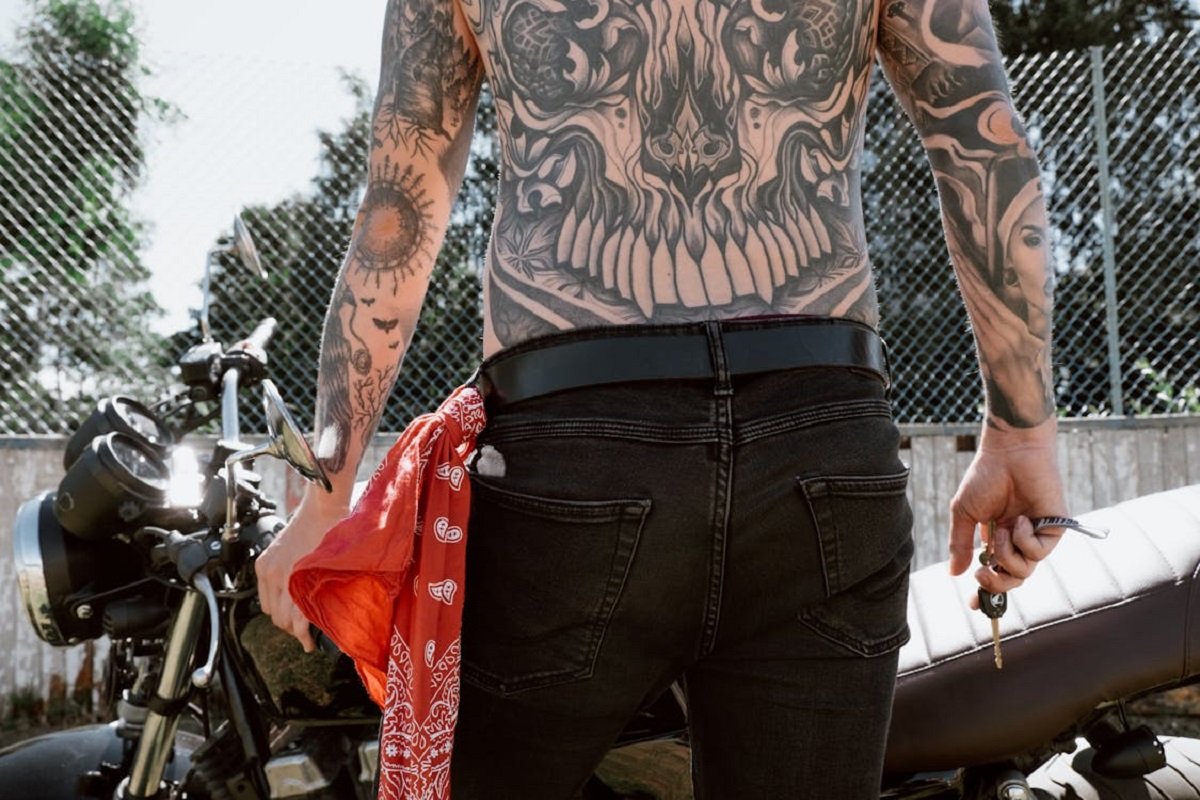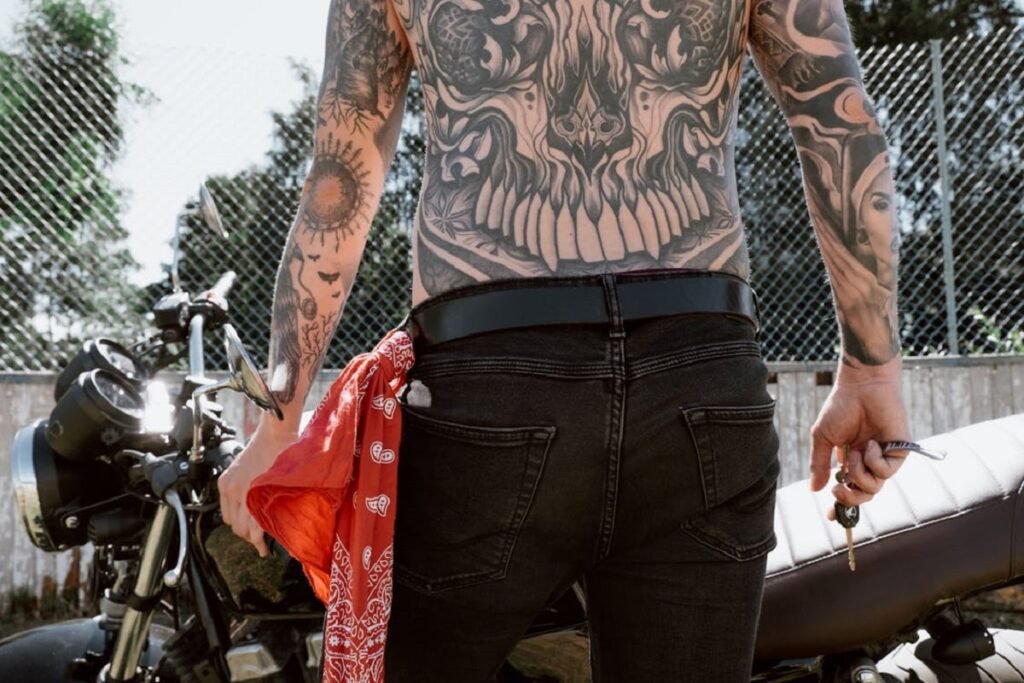Though they may be more popular than ever, tattoos include risks that should not be ignored. Find out how to encourage a healthy healing process and tattoo safety.

In a few of hours, you could be the proud owner of a brand-new tattoo. However, the ease of being inked shouldn’t deter you from giving permanent body art serious thought. Be aware of the risks and what’s involved before getting a tattoo.
How tattoos are done
A permanent mark or design created on the skin using tattoo ink is called a tattoo. Typically, a tattoo artist works with a portable device that functions similarly to a sewing machine. The device features several skin-piercing needles. The needles penetrate the epidermis and introduce tiny drops of ink with each penetration.
There is some pain and a slight amount of bleeding during tattooing. Tattoo artists typically don’t use anesthetics, or medications that reduce discomfort, while they work on their designs.
Know the risks
The skin is broken during the tattooing process. This implies that thereafter, skin infections and other health issues may arise. Among the hazards are:
Allergic reactions. Allergistic skin reactions, including itching rashes at the tattoo site, can be brought on by tattoo ink. Even years after receiving a tattoo, this can still occur. Compared to other tattoo ink colors, red ink is typically more prone to allergic reactions.
Skin infections. After obtaining a tattoo, one could develop a skin infection. Contaminated ink or improperly sanitized equipment may be the cause of an infection. A skin infection can also be more likely if you get inked in a studio that doesn’t take proper precautions.
Other skin problems. Inflammation can occasionally develop around tattoo ink. We refer to this as a granuloma. Keloids can also result after tattooing. The elevated patches known as keloids are brought on by an excess of scar tissue.
Diseases spread through blood. Blood-borne infections can infect you if the tattoo artist’s equipment was contaminated with blood. Hepatitis B and C, as well as methicillin-resistant Staphylococcus aureus, are a few examples. Obtain a hepatitis B vaccination before to getting a tattoo in order to reduce your risk.
Skin reactions to an MRI. In rare cases, the tattooed area may experience scorching agony during an MRI examination. There are instances where tattoos degrade the quality of an MRI scan.
If a tattoo causes an allergic response, an infection, or other health issues, you may require medication or other forms of therapy.
Make sure you’re ready
Consider your options carefully before being inked. You might want to wait if you’re unsure about getting inked or if you’re afraid you won’t like it. Refrain from giving in to peer pressure to get inked. Additionally, avoid being inked if you’ve recently used drugs or alcohol.
Speak with friends who have tattoos if you’re sure you want to get one. Find out if they can offer you any advice or tips.
Pick a spot for your tattoo carefully. Consider if you want to be able to cover up your tattoos with clothes. Remember that gaining weight, especially during pregnancy, might alter the appearance of a tattoo.
Insist on safety steps
To ensure your tattoo is done safely, consider asking the following questions:
Who does the tattooing?
Visit a tattoo parlor with staff that have received the necessary training. States differ in their laws governing tattoos and licenses. For information on county, city, or state licensing and restrictions, contact the health department in your area. Never let someone tattoo you if they aren’t trained in the art. A do-it-yourself tattoo kit should not be used.
• Is gloves used by the tattoo artist? Every time they create a tattoo, tattoo artists should wash their hands and put on a new set of disposable gloves.
Does the tattoo artist use sanitary equipment? Prior to your operation, make sure the tattoo artist removes the needle and tubes from their sealed packets. Additionally, every ink must to be put into fresh, single-use, throwaway cups. Equipment such as trays and containers should be brand-new or well cleaned and sterilized.
“Does the tattoo artist properly sterilize any equipment that needs to be reused?”
Verify if the tattoo parlor has an autoclave, a device that sterilizes heat. Any equipment that needs to be reused should be sterilized using the machine after each procedure. After every customer, instruments and supplies that cannot be autoclave sterilized should be completely cleaned. This applies to sinks, tables, and drawer handles.
Take care of your tattoo
Most tattoos take about two weeks to heal. To prevent infection and encourage healing:
Keep tattooed skin clean. Twice a day, gently wash the tattooed area with soap and water. Aim to keep direct water streams off freshly inked skin when taking a shower. Dry the area with a pat. Avoid rubbing it.
Use moisturizer. Several times a day, lightly moisturize the skin where the tattoos are located.
Avoid sun exposure. Until the tattoo cures, keep the area out of the sun.
Don’t go swimming. While the tattoo is healing, avoid swimming pools, hot tubs, rivers, lakes, and other bodies of water.
Choose clothing carefully. Anything that could catch on the tattoo should be avoided.
There can be additional steps you need to do, depending on the kind and size of tattoo you receive. For further instructions on how to take care of your tattoo until it heals, ask your tattoo artist.
Speak with a healthcare provider if you suspect an infection in your tattoo or if you’re concerned that it’s not healing properly.
Consult a dermatologist about tattoo removal choices if you’ve decided that your tattoo isn’t what you expected and you’re considering getting it removed. Usually, removal requires multiple sessions. Certain tattoos might not be entirely removable. Following the removal of a tattoo, scars could still exist.
